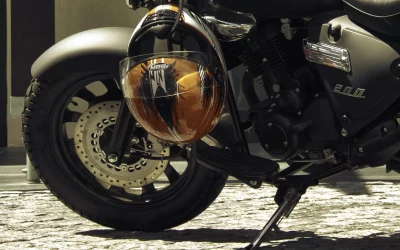How to Ride a Motorcycle While Staying Safe
Motorcyclists from all over the nation flock to Colorado for its moderate temperature and attractive landscapes, and motorcycle fans who make Colorado home are particularly fortunate to enjoy breathtaking sights on a joyride anytime they choose. Motorcycle accidents can happen, as much as riders adore the open road.
In reality, the Colorado Department of Highway Safety and Motor Cars (FLHSMV) predicts that over 9,000 motorcycle accidents occurred on Colorado highways in 2018, with around 500 deaths. Some people were lucky enough to walk away from a motorcycle accident, while others took one or more safeguards to guarantee they would live.
To escape a motorcycle accident, both experienced and rookie motorcyclists must stay focused on safety. Even the most cautious riders might perish in a motorcycle accident caused by a motor car driver. You do not influence other drivers, unfortunately.
You may, however, take steps to secure your life, or at the very least raise your odds of surviving, if an accident is caused by a negligent, irresponsible, or reckless motorist.
Free Consultation
In Person | Phone | Zoom
Wear the Correct Apparel
Only your motorcycle gear acts as a barrier between your body and the road in the event of an accident. When you invest in the correct equipment, you can lessen the severity of your injuries and increase your chances of surviving a car accident. The following are some of the most frequent items worn by motorcyclists, along with discussions of how they might help you survive a motorcycle accident.
Helmets
All bicyclists in Colorado must wear a full-face helmet that the Department of Transportation has authorized. You don’t have to wear a helmet if you’re above the age of 21, as long as you have an extra $10,000 in motorcycle insurance coverage.
However, just because you don’t have to wear a helmet doesn’t mean you should. According to the Centers for Disease Control and Prevention, motorcycle riders who wear helmets lower their chances of dying in an accident by about 40% and their chances of sustaining a traumatic brain injury (TBI) by around 70%. (CDC).
You must change your helmet regularly if it is to protect your head properly. According to the Snell Memorial Foundation, a non-profit that studies and tests helmets, you should replace your helmet every five years at the absolute least. Chemicals and oils from your hair may tear down the protecting region on the inside of the helmet, even though you can’t see it.
Wearing Eye Protection
You may be wondering how wearing protective eyewear will save your life in the event of a motorcycle accident. When you’re in an accident, how you manage your bike might be the difference between life and death.
If you can see well in a motorcycle collision, you can make the best decisions for controlling your bike, such as avoiding a guardrail or straying into oncoming traffic, which might result in your death. You must also wear eye protection under Colorado law. You’ll need goggles or sunglasses if you’re not wearing a full-face helmet to guarantee you have the greatest vision possible.
Protective footwear
A good pair of motorcycle boots might be pricey, but it’s an investment worth making. They may prevent you from dying as a consequence of a motorcycle collision, in addition to safeguarding your legs, ankles, and feet in the case of an accident. Boots, for starters, protect you from open wounds that might grow infected and cause death.
Even more importantly, boots provide stability in the event of a motorcycle accident. Most athletic shoes will slide off when a biker’s feet are twisted or distorted in a motorcycle accident. Boots usually remain on and may help you avoid falling off your bike in particular scenarios.
Clothing to Keep You Safe
Because of Colorado’s favorable environment, individuals often wear shorts, t-shirts, and flip-flops; nevertheless, wearing such attire while riding a motorcycle may result in death, even if the rider is wearing a helmet. When bicyclists do not wear protective clothing and are involved in an accident, they are in danger of developing road rash.
In severe accidents, road rash may scrape away layers of skin down to the bone, sending the body into shock. Because of the exposed sores, victims with severe road rash are especially vulnerable to lethal infections. You may always wear leather trousers or chaps with a jacket, but special padded motorcycle jackets with breathable mesh are recommended for those hot and humid days.
Know-How to Ride a MOTORCYCLE
Surviving a motorcycle accident may be contingent on your ability to control your car. When a car collides with your bike, you must react in a way that causes the least amount of damage. You may not be able to react in certain accidents, particularly those that occur at fast speeds.
However, understanding the proper steps to take might save your life when you do have the chance to react. Getting a bike that suits your physique and attending one or more motorcycle safety courses are the greatest ways to guarantee you can operate your bike properly.
Choose the Correct Bike Size for Your Body
Whether you’re new to bikes or have been riding for years, the fit is more important than aesthetics or style when purchasing a motorcycle. Purchasing a bright new motorcycle only to have it ride badly because it does not work with your physique is a typical mistake.
Of course, you want to ride the nicest bike on the road, but not at the price of your safety. A motorcycle that you are purchasing for the first time must suit your physique.
Sitting on the bike and holding it upright can help you discover a proper fit. When sitting, both of your feet should be level on the ground, and you should be able to comfortably reach the handlebars. Your motorcycle should also not be too hefty for you. When you elevate the kickstand, you should be able to keep it straight without too much effort.
Consider taking a motorcycle safety course.
Motorcycle safety training is required for both new and seasoned motorcyclists. Even long-time motorcycle fans might benefit from a refresher or advanced training session since years of riding expertise can lead to the formation of harmful habits. These classes will teach you how to prevent motorcycle accidents and manage your bike if you get into one.
Completing an authorized motorcycle rider education course may also qualify you for a discount on motorcycle insurance and unique dealer incentives. The Motorcycle Safety Foundation (MSF) has developed certified, standardized courses for riders of all levels around the United States.
The Colorado Rider Training Program (FRTP) of the Colorado Department of Highway Safety and Motor Cars (FLHSMV) has authorized most MSF courses. Different training providers offer a variety of courses, but the Basic Rider Course and its continuation in Basic Rider 2: Advanced Rider are the two most popular.
The Basic Rider Course is a two-day motorcycle safety course that combines both classroom and hands-on training. Basic bike safety procedures, braking tactics, obstacle avoidance, turning training, and how to ride safely are all covered in this course. If you want to ride a motorcycle in Colorado, you’ll need a specific endorsement on your driver’s license. To earn their first endorsement in Colorado, people receiving their first endorsement must undergo the Basic Rider Course.
The Basic Rider 2 Course is an eight-hour course that includes both classroom and hands-on instruction. Bikers with their motorcycle may take this advanced course to master advanced abilities in safety and bike handling. Students may also practice their abilities under the supervision of the teacher.
Motorcycle Maneuvers to Help You Survive a Crash
Bikers who are engaged in a motorcycle accident, particularly rear-end crashes, may not see it coming. When this occurs, motorcyclists are unable to make decisions that will lessen the chance of a tragedy. In other circumstances, motorcyclists may observe another car approaching, have a mechanical problem, or encounter a road danger they cannot escape, indicating that a collision is impending. A rider may execute several precise actions in these scenarios that boost their chances of survival, especially if they are wearing the proper gear and know-how to operate their bike. They are as follows:
You Should Slow Down
When a motorcycle accident happens, the impact of the crash is greater the quicker you are moving. When you’re aware that a collision is imminent, you want to lose as much speed as possible.
However, avoid slamming your front brakes. You run the danger of locking your brakes and being thrown off your bike or having the bike turn over. This puts you in danger of being hit by another car nearby that cannot dodge you, resulting in possibly deadly injuries. It’s best if you only use your back brakes.
Avoid laying your bike down.
When another car strikes you and comes to a halt, you should do all you can to keep upright on your bike. It’s quite doubtful that you’ll be able to do so at high speeds but give it you’re all. You have a higher chance of surviving a motorcycle collision if you avoid being flung off your bike.
Biker corpses may slide for great distances and even land up in traffic if tossed after an accident. Suppose you’re approaching an item; attempt to avoid colliding with it head-on. Instead, spin your
bike such that the side of your bike comes into touch with you. When confronted with an impending accident, many motorcyclists make the error of laying their bikes down in the incorrect spot.
Decide where you want to go down.
It’s significantly more probable that you and your motorcycle will be involved in a motorcycle accident. When you have the chance, guide your bike to the safest spot to crash after being struck by a car. You want to go down on the softest surface possible, out of the path of other cars.
You may end up in a grassy ditch or median. Although you may still sustain terrible injuries, a softer landing away from other drivers and on a more forgiving terrain can improve your chances of survival.
When is it OK to let go?
When you realize you won’t be able to keep your motorcycle off the ground, and you’ll be going down with it, you’ve reached the point of no return. Your impulse may be to cling to your bike, but if it collides with you, you might be crushed. Instead, just let go of the bike due to physics.
A moving thing wants to remain in motion. When you let go of your bike, it will continue to move for a short time. Choosing to go along with the ride might out to be a catastrophic mistake. Allowing yourself to let go is the last choice, but if you must, tuck your limbs and chin into your body and roll to prevent harm.
Get medical help as soon as possible.
If you are injured in a motorcycle accident, getting early medical attention is one of the greatest methods to guarantee you survive your injuries. If you are unconscious or unable to move, a bystander or eyewitness should phone 911 to send emergency responders to your location.
Accidents cause the body to release adrenaline.
Even if you survive a motorcycle accident, it does not rule out the possibility of fatal injuries. Internal bleeding, organ damage, and severe brain traumas may all kill you quietly. You won’t experience any pain or symptoms for hours, if not days, and if you don’t get help, you might die. Allow a doctor to check you and do any required tests to guarantee you did not sustain a fatal injury and that you will survive your motorcycle accident.
If you or a loved one has been injured or killed in a motorcycle accident, Colorado law allows you to seek compensation for the losses caused by the accident and injury. An expert Colorado motorcycle accident lawyer can help you choose the best course of action for your situation and make the people responsible for their conduct.







